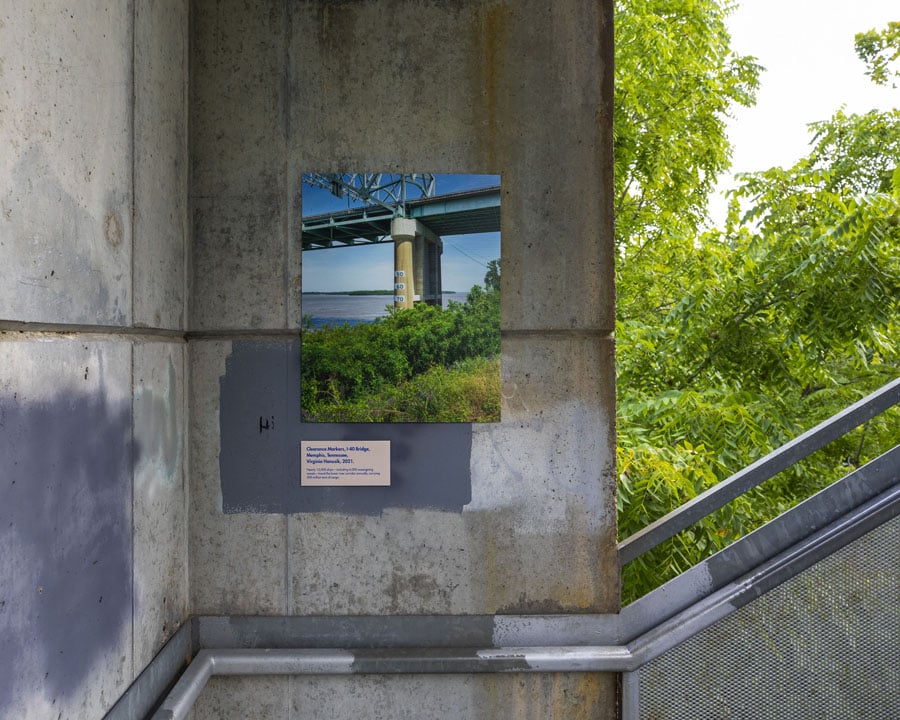
August 26, 2021
Exhibit Columbus 2021 Explores the Future of the Middle City
“If the legacy of Columbus is a kind of social project through architecture, what are its next lessons?”
Mimi zeiger, co-curator
This year, the city remains at the heart of the art and architecture fair circuit with the third annual Exhibit Columbus, curated by the critic Mimi Zeiger and the architect and author Iker Gil. In a sense, the pair have set a new test for the city’s built environment with the ambitious theme New Middles: From Main Street to Megalopolis, What Is the Future of the Middle City? As Columbus celebrates its bicentennial, the fabled buildings face the incoming ravages of climate change. Some have been emptied by COVID-19 lockdown; others were transformed from underutilized public plazas into sites of protest. “If the legacy of Columbus is of a kind of social project through architecture,” Zeiger says, “what are its next lessons?”

Jei Jeeyea Kim, LaWaSo Ground, 2021, Columbus, Indiana. University affiliation: Indiana University. Site: First Christian Church Courtesy Hadley Fruits
The first step was to clear out any feelings of preciousness. “Everybody talks about going to Columbus as this, almost, pilgrimage,” Gil says. “But we’re thinking about the narratives and existences that become hidden from this mainstream history including the reality of [the people who] live and work here.” By siting 23 artworks in and around the fabled buildings, the curators seek to challenge the dusty view of Columbus as a Modernist theme park. They seek to find out if, and how, Modernism might survive the challenges of the 21st century and accommodate the public good through representation.
On the lawn of First Christian Church, for example, LaWaSo Ground by the architect and Indiana University assistant professor Jei Jeeya Kim, serves as an alternative place for contemplation. Designed in collaboration with Indigenous artist Katrina Mitten of the Myaamia Nation of Oklahoma, the installation incorporates the same limestone as Saarinen’s façade, a stone quarried nearby and used in civic monuments around the country that valorize events of violence against Indigenous peoples. Mitten conceived a variety of patterns referencing Indigenous earthworks along the nearby river valleys. It becomes a reflective space to walk, like a maze or mandala,” Zeiger says. “It creates its own kind of sacredness that is not monumental but asks us to think about how limestone was used, and how we bring Indigenous voices into that conversation.”

Archival/Revival, Olalekan Jeyifous, 2021, Columbus, Indiana. Site: Cleo Rogers Memorial Library Courtesy Hadley Fruits
Indigenous and other marginalized voices, of course, have always been there. They just are less often heard and remembered. When I.M. Pei’s nearby Cleo Rogers Memorial Library opened in 1969, initial exhibits included an African art exhibition put on by the Human Relations Commission’s “Africa and Black and White America” program as well as the six-week-long Columbus Black Arts Festival. Olalekan Jeyifous’s Archival/Revival revives work by the Black artists in those shows back to the library’s vast plaza with an installation that layers AR displays of their creations—and news footage of the public’s reactions to them—over follies with a laser-cut mural. “It’s history layered literally over the library plaza,” Zeiger says.
Some artists, like Exhibit Columbus Photography Fellows Virginia Hanusik and David Schalliol, explore the effects of climate change through the lens of Columbus’s location in the middle of the Mississippi watershed. Others watch the clock: Ecosistema Urbano floats the idea of the Cloudroom, an inflatable classroom for students to use during COVID-19, while Future Firm turns César Pelli’s 1971 Sears Building Plaza into a Midnight Palace for the 40 percent of the city’s population who work second or third shift to commune with others who don’t work nine to five. Ang Li honors the ghosts of buildings gone with her Window Dressing installation consisting of mylar shingles that evoke César Pelli and Norma Merrick Sklarek’s Postmodern Commons and Courthouse Center, well-regarded enough to host the Pritzker Prize ceremony in 1994 yet demolished in 2008.

Cloudroom, Ecosistema Urbano, 2021, Columbus, Indiana. Site: Central Middle School Courtesy Hadley Fruits
The biggest provocation of New Middles however is the idea that American cities aren’t facing the end of Modernism, but are witnessing its transformation into a future that includes those who it once left behind. “The kind of heroic gestures of Modernism aren’t in service in the ways we necessarily want them to be,” Zeiger says. But these artists are proving the buildings still work as centers of historical context, sites of resources, and canvases on which to realize new ideas. “Maybe,” Gil wonders, “you bring back that Modernist idea of civic-ness not through building as many buildings but continuing the investment in communities and places.”
New Middles: From Main Street to Megalopolis, What Is the Future of the Middle City? is on view throughout Columbus from August 21 through November 28, 2021.
Would you like to comment on this article? Send your thoughts to: [email protected]
- No tags selected
Latest
Profiles
Zoha Tasneem Centers Empathy and Ecology
The Parsons MFA interior design graduate has created an “amphibian interior” that responds to rising sea levels and their impacts on coastal communities.
Viewpoints
How Can We Design Buildings to Heal, Not Harm?
Jason McLennan—regenerative design pioneer and chief sustainability officer at Perkins&Will—on creating buildings that restore, replenish, and revive the natural world.
Products
Behind the Fine Art and Science of Glazing
Architects today are thinking beyond the curtain wall, using glass to deliver high energy performance and better comfort in a variety of buildings.



















